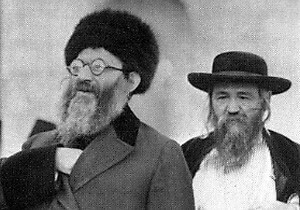
A delegation of rabbis once came to Rav Kook to complain about the fact that he, the Chief Rabbi, associated with the secular pioneers who disregarded the laws of the Torah.
“Honorable Rav!” exclaimed one of the visitors. “Can it be that Eretz Yisrael will be built and established by young men and women who publicly violate the mitzvot of Hashem? Is this not a desecration of holiness, in the plainest sense of the word?”
“Absolutely not!” replied the Rav in a clear, fervent, and confident voice. “Just think about it: The holiest place in Eretz Yisrael is undoubtedly the Beit HaMikdash, the Holy Temple. And the holiest section of the Temple is the Kodesh HaKodashim, the Holy of Holies.
“Now, when the Temple stood in its place, no one was allowed to enter the Kodesh HaKodashim, except for the High Priest. And he was allowed to enter only once a year — on Yom Kippur — after painstaking preparations, wearing his special, white priestly garments, to perform the sacred service of the day.”
“Nevertheless,” continued the Rav, “when the Temple was being built, workers and artisans from the entire spectrum of Judaism undoubtedly entered the place. Even simple folk, who were not particularly known for their Torah erudition and piety, entered the site of the Temple. They even went all the way in to the Holy of Holies whenever they wanted, wearing regular work clothes, until the Temple was completed.”
From Mundane to Holy
On another occasion, when Rav Kook was asked about the secular builders of the Land, he replied:
“The Talmud states in reference to the building of the Holy Temple, ‘[The repairmen] work with mundane [materials], and they sanctify it afterwards’ (Me'ilah 14a).
The same is true regarding the building of our Holy Land. It is now being accomplished in a partially secular manner, but it will all be sanctified in the end.”
All of a sudden, the Rav rose from his chair and began dancing with intense fervor and a sacred passion, singing the words of the Talmud over and over again:
בונים בחול ואחר כך מקדישין
“They build with the mundane and sanctify it afterwards!”
(From An Angel Among Men by Simcha Raz, translated by Rabbi Moshe Lichtman, pp. 428-430)





